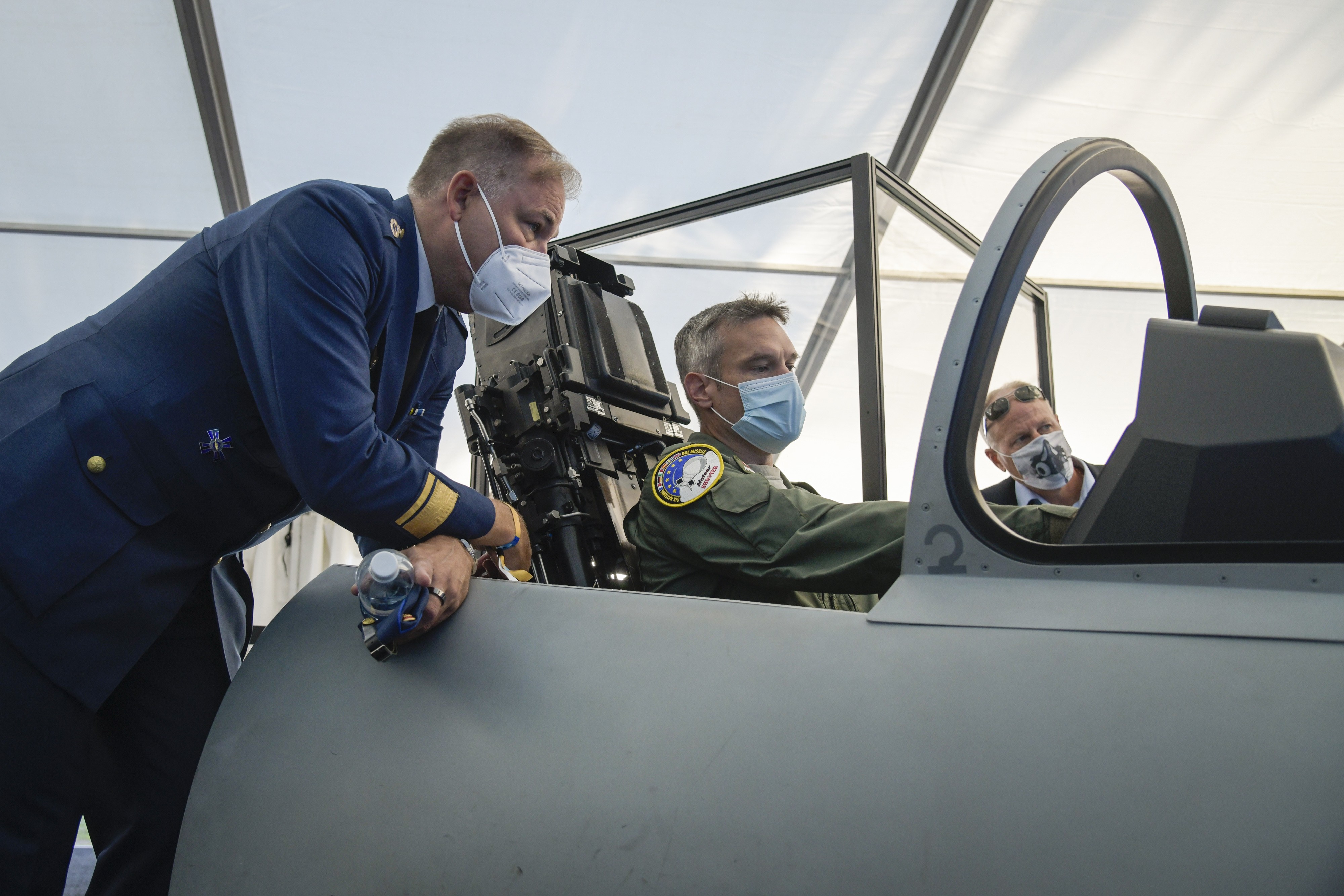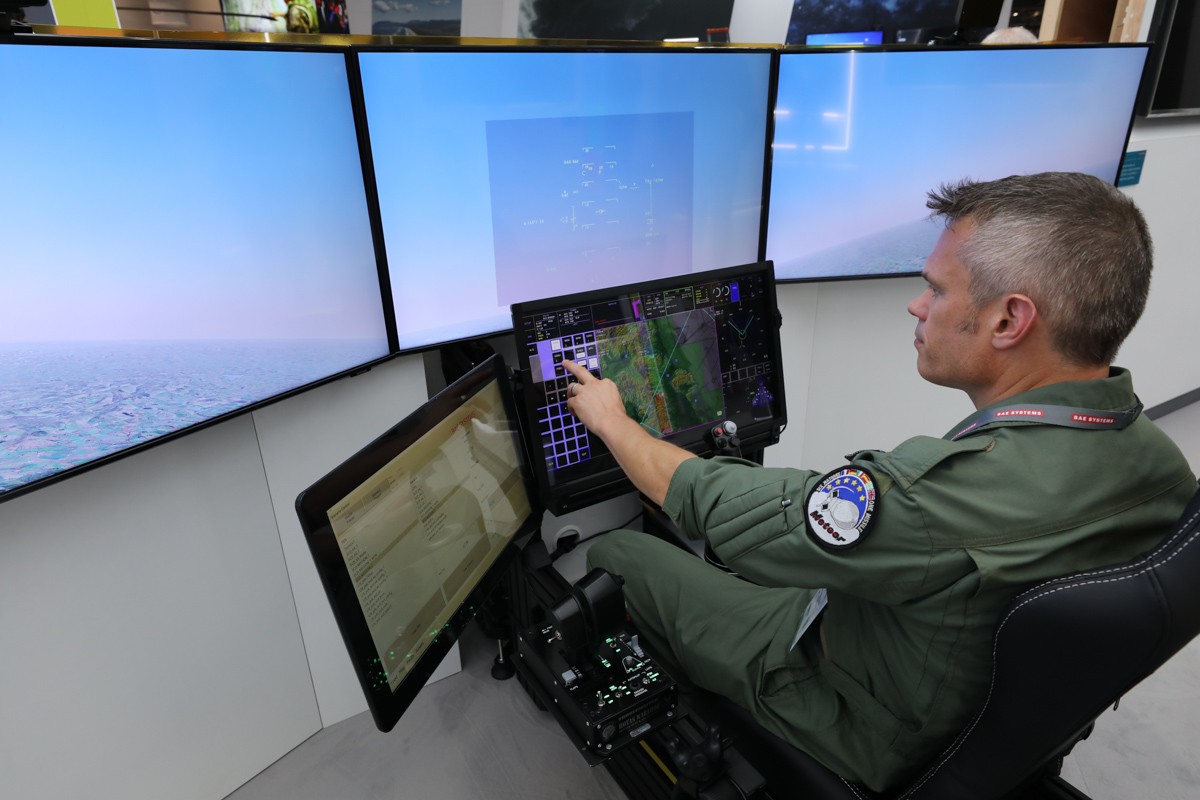
Tell us about your career and life in the RAF
After training I flew the Tornado F3 for my first seven years of operational flying. I had exchange tour in the United States, flying the F-16 and when I came back to the UK to fly Typhoon went straight to the Typhoon Test and Evaluation Squadron (TES).
My role was as an Evaluator Pilot, and throughout my time on the TES, I was the project pilot for most of the systems on the aircraft. I saw various systems come and go. Specifically assigned to particular trials, from radar to air-to-air missiles, I was the ‘go-to’ pilot for advice for the trial teams I was assigned to.
When it comes to development tests, the type that are carried out by test pilots at Warton, the questions asked are, ‘Does the weapon leave the aircraft safely? Does the data get correctly uploaded to the weapon? Does the weapon correctly guide towards the target?’
However, on the operational side, it is more about, ‘How do we take this weapon or system and tactically employ it?’ The ultimate aim of the job was to deliver advice to the frontline to say, ‘We recommend you use this weapon in this way.’
That could be everything, from how it is stored and moved onto the aircraft to how it is carried, what height and speed you want to fly around with it and ultimately how you aim it and use it with the best possibility of employing it successfully.
What made the role so enjoyable?
When you’re bringing a new capability into service, whether it’s an avionics or software capability or a new weapon, there tends to be a lot of ‘unforeseen unknowns’. I enjoy the challenge of getting to the bottom of the technical complexity, understanding why something wasn’t working the way we expected it to.
We generally found that what seemed to be a problem with a particular piece of equipment turned out not to be a problem in the end. We hadn’t understood how a particular piece of equipment was going to work or interact with another system on the aircraft.
Once we understood those interactions at a detailed technical level, we found that we could almost always work around them, through the development of the right procedures or techniques.
And that’s how we got the equipment into service, by advising on the correct techniques and the correct procedures to avoid the potential pitfalls. I really enjoyed that side of the job. An aircraft isn’t just one system, it can be scores of separate systems, and they all interact. If you change one, you don’t necessarily know the knock-on effect it is going to have on other systems until you test it in a live environment.
You can test things in isolation in a ground or risk-free environment but without testing them in the environment where they're going to be operated, you can’t see the facts you need to understand the full effects. You’ve also got to have access to a lot of data to work out what happened in forensic detail after a test event. You are pouring through that data and puzzle solving, asking, ‘Why did this outcome happen? What are the interactions between all these systems?’
Who are the people who have inspired you?
My parents firstly. They gave me the idea that I could be a pilot in the RAF when I was young, and the idea just stuck. After that, really it was a small select number of people who were very, very good at a job and inspired me along the way.

What led you to the role you now have in BAE Systems?
I'd been doing a job I really enjoyed for eight years plus. I would happily have continued in it, but I felt as though I needed to do something different, to make a change.
It was in the middle of the Covid pandemic, so flying in the civilian world really wasn’t a choice and it had never interested me that much. I wanted to continue in the area that I'd been working in, on the technical side of military aircraft.
There are a few, different companies who potentially would have been an option. But I’d had a good working relationship with BAE Systems throughout my time in the air force. I had flown out of flight ops at Warton, and I knew several people within the company. Everything I'd heard about the company as an employer was good and they offered me a role which was a really good fit.
Leaving the military is a challenge for everyone. You develop skills in many roles which are certainly useful, but they can be so specialised that it's difficult to find relevance in the outside world.
I had the opportunity to continue to use the technical expertise I’ve gained in the RAF working on the Typhoon and for it to be relevant in a civilian role. I was lucky to have that opportunity because a lot of specialists in the forces don’t.
Tell us about the role
The job title is Operational Requirements Manager, but I don't think that that's a great description of what I actually do.
I would say the job is all about communication. We’ve got a good relationship with customers but when things go wrong, it is normally due to miscommunication.
On the rare occasions when things go wrong it can be because the customer ends up getting something that they didn't expect. And we as a company think that we’ve given the customer exactly what they wanted. So, there’s been that breakdown in communication.
I'm employed because of my specialist expertise in terms of understanding how Typhoon, as a weapon system, is operated.
So, if I can help the communication flow between the company and the customer, based on my knowledge of how they operate the aircraft and the systems, and prevent those communication breakdowns, that must be a good thing.
I'm involved in several projects in terms of the delivery of new capabilities to Typhoon, from those that are going to be tested later this year to some in the 10-year plus timeframe.

I'm constantly trying to stay on top of all these different capabilities, working with the engineers, the project managers, the technical managers on the company side as well as those working in procurement on the customer side.
Keeping my contacts with the flying and testing community is also important so I can understand technically, exactly what the customer wants out of all these products to try to prevent any communication breakdowns. If they can be avoided, then we can avoid the worst-case scenario where a front line pilot ends up getting something they didn’t need at the expense of something they did.
How have you found transition from military into industry?
There's been a transition from the RAF way of doing business to working for a civilian company. But at the same time, there’s been such an enormous transition, for everybody, because the transition to a pandemic way of working happened for me at the same time as I left the air force.
It’s been a game changing change of way of working and a change of pace. I probably work from home for at least 60 or 70 per cent of the time, whereas I was used to an environment where I was going into a squadron or an office/flying environment every day.
Working from home, as well as not having the forced structure of a flying programme, suddenly gives you a lot of flexibility for quality-of-life stuff, whether that's hobbies or spending more time with the family. I’m trying to take advantage of that as much as possible.
On the flipside, when you just want to find somebody, speak to them face-to-face and have a chat and ask some questions, which was a lot easier when you were working in the same building.
That’s the same for everybody. A certain amount is lost when you take away face to face communication. So that has been a challenge, but it's not unique to me or my job and it’s something we’re all having to deal with and we're all finding our way. Overall, I think the benefits far outweigh the negatives.
How does it feel to be working on the broader Eurofighter programme?
The strengths are that we have some great experience and talent pools in the very specialist areas associated with the different systems on the aircraft. They are all spread throughout the partner companies (across the 4 nations) who design and build Typhoon.
The key is finding those individuals, finding those specialists. Once you find them the level of knowledge is unsurpassed. Their technical understanding is exceptional because they have been working on the system for so long and have been literally responsible for building it.
Looking at future capability initiatives, what does that say to you about the longevity of the Eurofighter Typhoon weapons system?
It is far and away the best performing aircraft I’ve ever flown. As an airframe it is just phenomenal. With the right systems on board, it has unsurpassed potential.
If we get the systems, we put on it right Typhoon has an enduring capability and as long as manned fast jets are flying, Typhoon will be one of the best.
What do you feel makes your role so important?
My role is very much advisory, but I think that it is important. I’m privileged to have flown the aircraft, there are not many of us in the company that have, and therefore have a full understanding of how its systems are used by the operator.
That understanding of how all those systems are used together is really important from a design point of view and it’s almost impossible to understand that unless you've actually used the system or multiple systems in live flight.
For example, if you change something about the avionics design to save a pilot ten seconds on a mission, it is hardly worth doing, but if you can save ten seconds on a task the pilot has to carry out every minute that is game changing. It will dramatically enhance the situational awareness of the operator in the cockpit. To understand the areas where the best potential for improvement lies it really helps to have flown the aircraft and to know first-hand which tasks happen once per mission and which tasks happen every minute.
The commodity of situational awareness is probably the most valuable in a fast jet cockpit. How high or fast the aircraft can fly or even how many weapons it can carry are often not as important as the operator’s ability to have complete situational awareness during a mission.
My value is in taking the understanding of that environment in the cockpit and translating it to the engineers and designers, helping them to make those decisions that result in an aircraft where the pilot has that optimal situational awareness.
